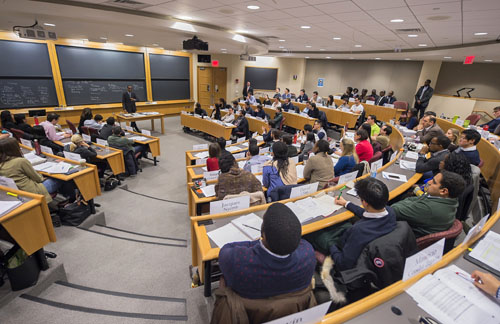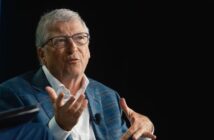 Rwandan President, Paul Kagame, gave a guest lecture on Friday at the Harvard Business School microeconomics of competitiveness class. Kagame answered students’ questions on Rwanda’s journey of transformation.
Rwandan President, Paul Kagame, gave a guest lecture on Friday at the Harvard Business School microeconomics of competitiveness class. Kagame answered students’ questions on Rwanda’s journey of transformation.
Kagame spoke on the challenges the country has had to overcome in order to achieve the level of progress registered today, as well as the lessons the rest of the world can learn from Rwanda’s journey:
“Our situation, Rwanda’s case is a very complex one but it is full of lessons not only for Rwandans, but for the rest of the world specifically for Africa. Rwanda showed humans are capable of the worst but also how 22 years down the road, reforms in Rwanda can serve as an example.”
“Our tragedy had a silver lining, everyone took note that no one benefitted from it and people came together to find a solution,” Kagame added.
On Rwanda’s vision for the future, He explained told the students:
“Our aspiration is to build a solid foundation for our number one asset: the people of Rwanda. How we invest in our people, be it in health, education, capacity building and more, is equally important as their role in achieving this. Our vision for the future is not divorced from the vision we have always had. It is really hinged on our people and their development and ending up where we want: a stable secure, prosperous country,” he added.
On the topic of economic growth, President Kagame pointed to being landlocked as key in thinking harder and smarter to find solutions to sustain growth.
“Being landlocked has helped us think smarter and harder about investing in infrastructure and high value goods. We are investing in technology, services that render being landlocked irrelevant.”
Emphasizing the importance of inclusive growth, President Kagame highlighted Rwanda’s efforts to ensure economic growth benefits the people of Rwanda equally as exemplified by the over one million people lifted out of poverty between 2006 and 2014.
President Kagame also challenged students to look beyond aid as uniquely responsible for growth:
“Aid is not responsible for growth, it is how you use it and if it is used to build a foundation that promotes growth. If you rely on what you get from the outside and do not do anything from the inside, you are doomed, you don’t achieve anything.”
Read the full story HERE



